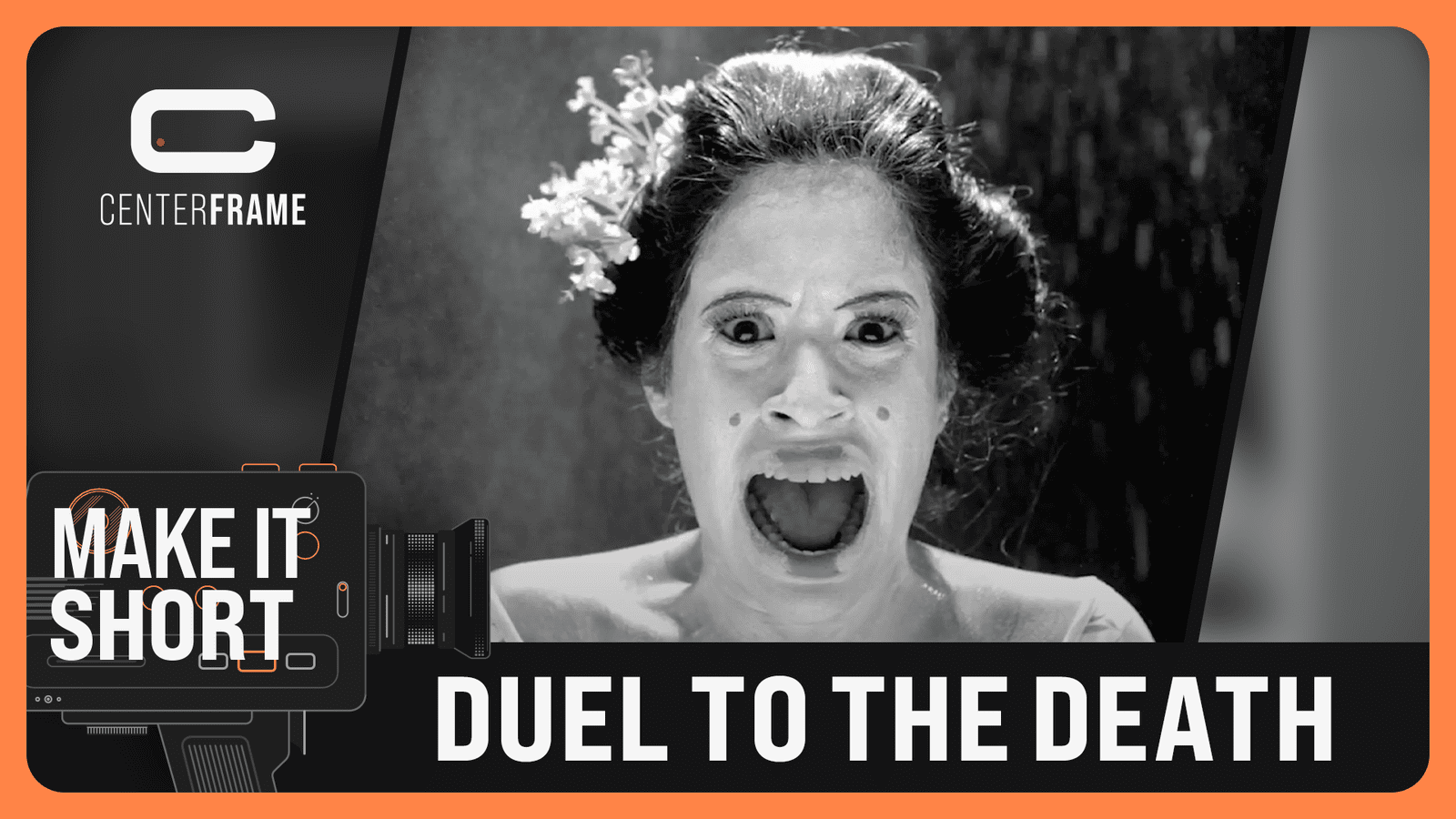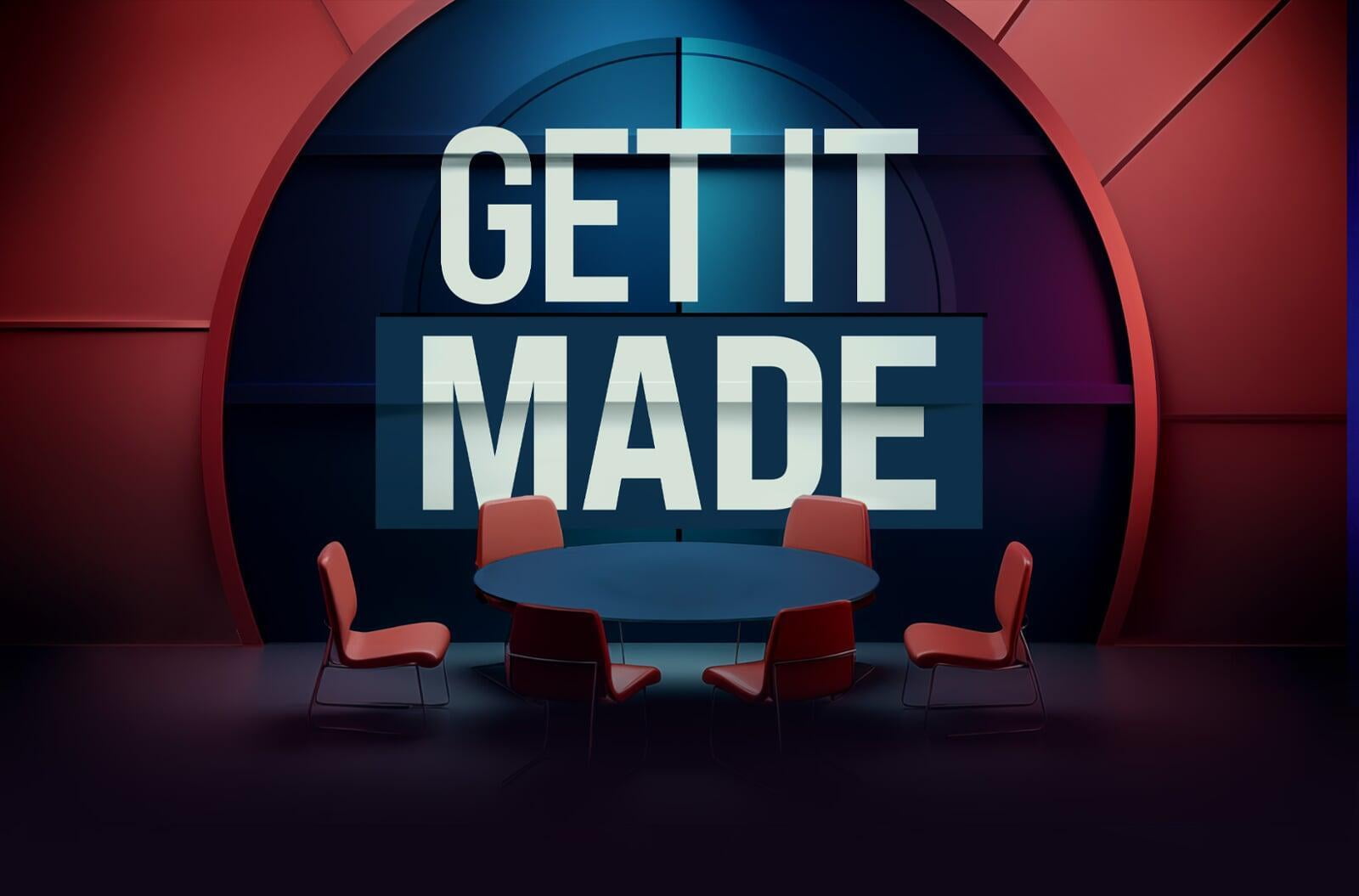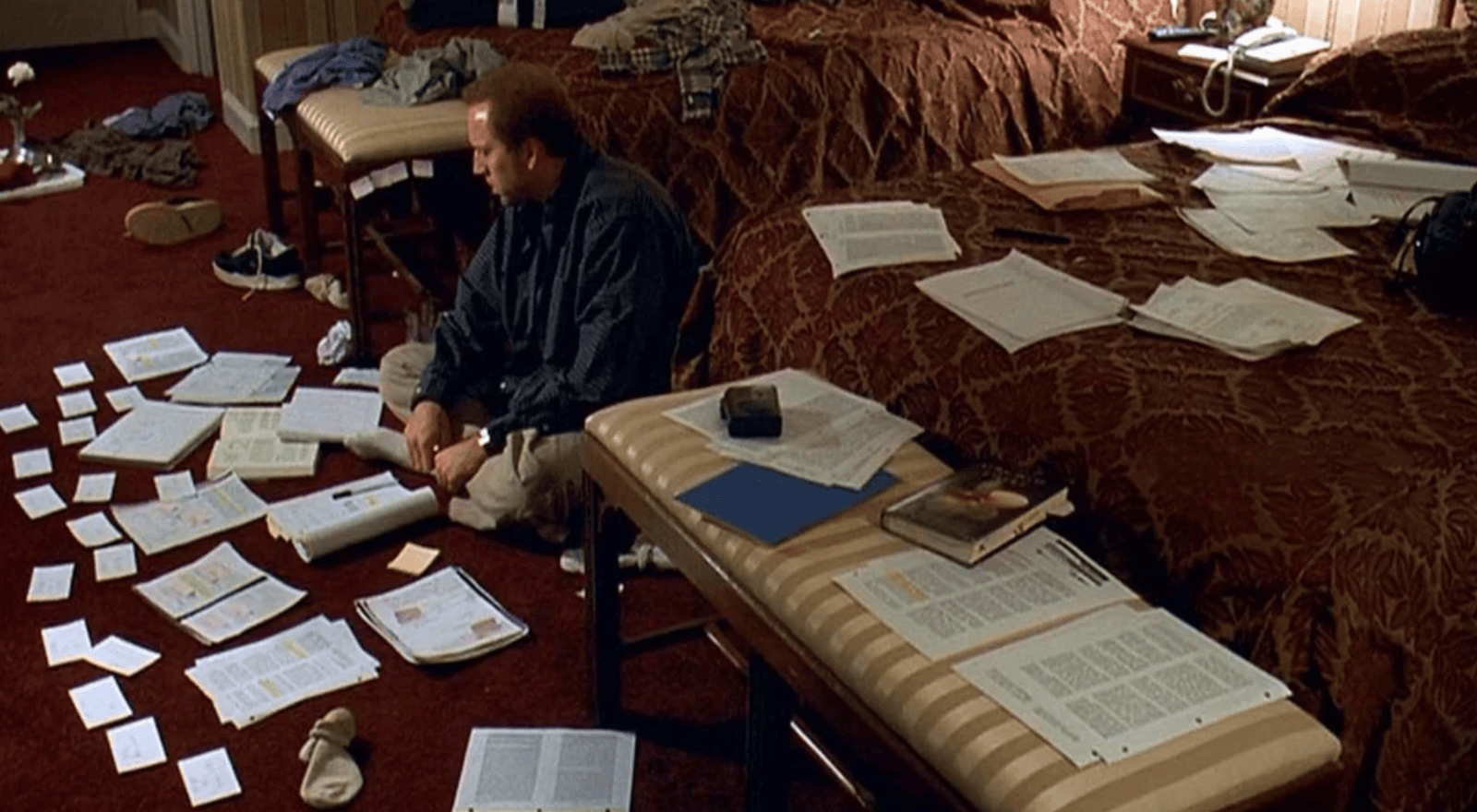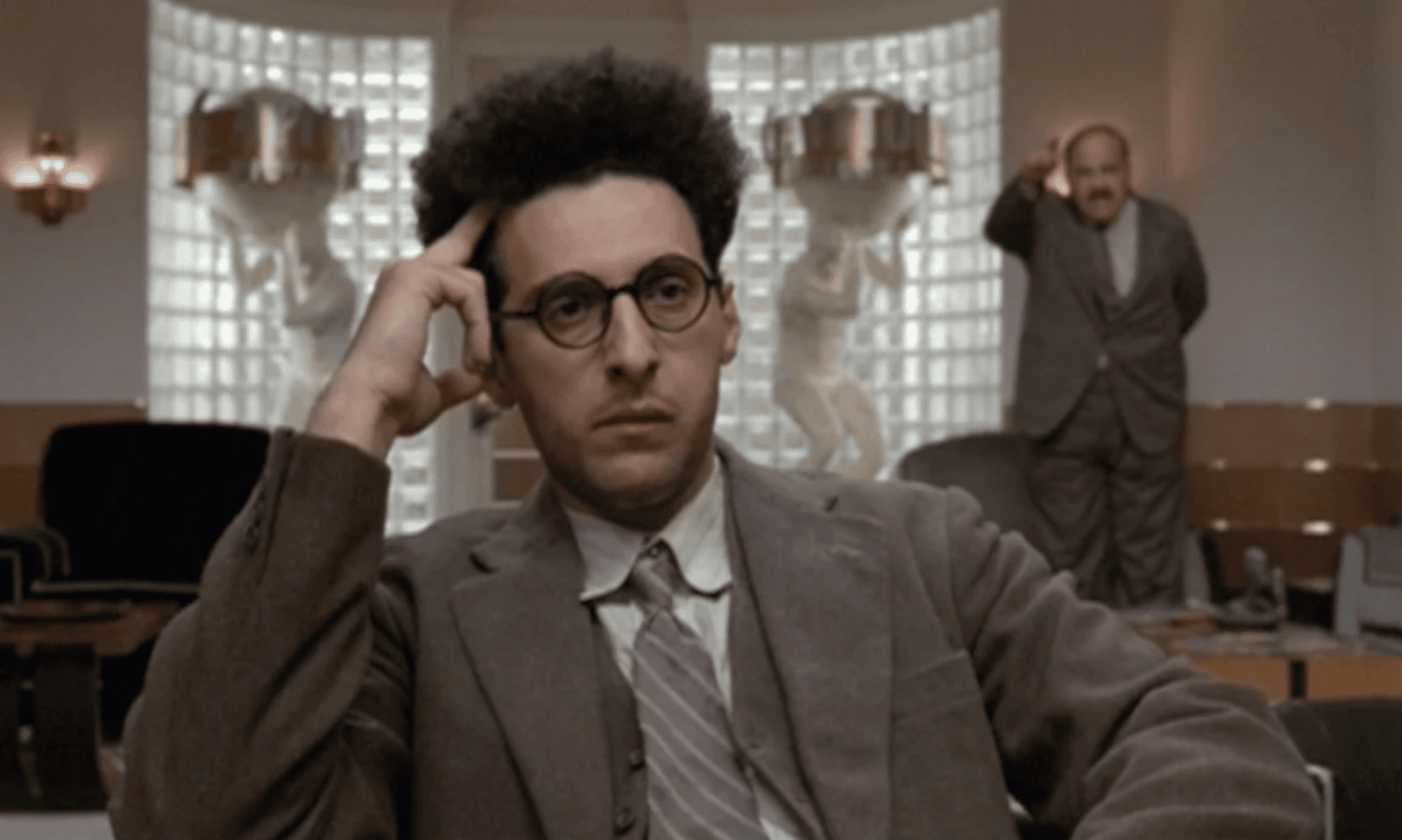HOW TO MAKE AN HOMAGE SHORT FILM
WITHOUT COMPROMISING YOUR MESSAGE

MAKE IT SHORT
EPISODE 20
HOW TO MAKE AN
HOMAGE SHORT FILM
WITHOUT COMPROMISING
YOUR MESSAGE

DIOGO BRÜGGEMANN
CenterFrame Team
Greetings and a warm welcome to the latest episode of Make It Short! Once again, we've assembled a distinguished panel of industry experts, eager to immerse ourselves in the intricate world of filmmaking and offer valuable insights on a carefully curated short film. Our unwavering mission remains unchanged: to provide constructive critique and deliver an enriching educational experience rooted in the narratives shared by our featured filmmakers as they navigate the process of crafting a short film. Joining us from the UK studio today is the exceptionally talented Bernhard Pucher, a seasoned filmmaker and co-founder of CenterFrame. And together with me, all the way from São Paulo, we have the pleasure of hosting our esteemed guest, Tomas Fleck, versatile Brazilian writer and director. Without further delay, let us delve right into the heart of today's featured short film!
The Premise
Today we are going to discuss Duel to the Death: A Samurai Story, a compelling historical action homage in the form of a short film, artfully directed by Peruvian filmmaker Jorge Ossio Seminario. This cinematic piece transports viewers into the world of samurai, unfolding its narrative against the backdrop of South American deserts. It stands as a harmonious amalgamation of genres and influences, meticulously crafted to pay tribute to the timeless legacy of classic Japanese cinema. Rendered in a striking black and white palette, the film embarks on a journey that revolves around a fateful duel between two protagonists, the reasons for which gradually display as the narrative is presented. The storytelling examines the personal histories and backgrounds of these characters in a profoundly dramatic fashion, deepening our understanding of the impending clash.
In our conversation, Tomas observes that while the short film is steadfast in its homage to classic Japanese cinema, it interestingly integrates elements characteristic of Latin American filmmaking. This infusion is notably evident in the style of acting and other nuanced aspects of the production. Bernard echoes this sentiment, highlighting the intricate Peruvian-Japanese connection and the pervasive love letter to the genre that permeates the film, but mentioning that he missed a more Peruvian flavor in the mix. Amidst the visual beauty and the homage, Duel to the Death carries a poignant message centered around the perpetual cycle of violence stemming from the tradition of honor killings. This message, though most apparent in the film's concluding moments, may take a backseat to the overarching homage, given that the film artfully stars and concludes with montage sequences paying tribute to classic Japanese samurai cinema.
The Context
Our interview with filmmaker Jorge Ossio Seminario provided profound insights into the creation of Duel to the Death. He was kind enough to share with us that this cinematic endeavor draws inspiration from a diverse spectrum of old silent and classic films, transcending geographical and cultural boundaries. The film is conceived as a narrative evocative of a lost film, mirroring the aesthetics of a bygone era. The primary objective was to craft a compelling feature film, and even if Duel to the Death ultimately served as a proof of concept, it powerfully critiques the rigid conventions inherent in traditional patriarchal societies. This underlines the film's capacity to transcend its role as a mere homage and assert itself as a vehicle for social commentary - even if it is a very ambitious task for a short film.
In our exploration of the film's aesthetic, particular attention was devoted to the influence of Akira Kurosawa, whose indelible mark is discernible throughout the short film. Of notable significance are the montage sequences that introduce and conclude the short film, which Jorge Seminario elucidates as serving the dual purpose of emphasizing the film's thematic depth and enumerating his myriad sources of inspiration. We also ventured into the realm of interpretation, where the film's tone was a focal point of discussion. Duel to the Death presents a multifaceted experience, oscillating between moments of intense drama and instances of comedic pastiche, underscoring the nuanced layers of storytelling and artistic expression.
Finding The Balance Between Homage And Message
After a very elucidating conversation, one of our conclusions was that Duel to the Death, as well as many other homage movies, was always trying to balance the message it wanted to tell with the homage elements it brings from beginning to end. And there are some relevant ideas for a film (short or feature) not to get lost in between. First, clearly define your primary intent for the film. Decide whether the homage or the message takes precedence. It's possible to have both elements, but one should serve as the dominant theme while the other complements it. If the idea is to create an original story that can reach different audiences, we strongly recommend a focus on the message. This can be done by using subtle and integrated references to pay homage. Avoid overt or distracting homage elements that detract from the message. Subtlety can be more effective and less overwhelming.
It is important to integrate the homage elements seamlessly into the narrative. They should enhance the storytelling and contribute to the message, rather than standing out as separate layers. You may use symbolism and metaphor to convey both the message and the homage. Symbolic elements can carry multiple layers of meaning without making the film overly complex. Also, don’t forget to develop a concise and well-defined concept that unifies the homage and message. Ensure that both elements are integrated into the core concept from the start and keep the script concise and focused.
Finally, always be mindful of the film's runtime. In a short film, every second counts. Avoid overloading the film with too many layers to ensure a focused and impactful viewing experience. To achieve that, a very precise editing can help streamline the film. Eliminate scenes or shots that don't serve a clear purpose related to either the message or the homage. Moreover, use visual storytelling techniques to convey information and emotions effectively. Visual cues can streamline the narrative and reduce the need for excessive dialogue. And at the end, take some time to seek feedback from focus groups or trusted individuals who can provide an objective perspective on the balance between homage and message.
Final Remarks
In conclusion, Duel to the Death emerges as an inspired tribute to the enduring artistry of Japanese cinema that tries to navigate the delicate balance between homage and storytelling. While talking to Jorge, we concluded that his beautiful short film invites viewers to embark on a cinematic journey that transcends cultural boundaries, encapsulating the essence of timeless cinematic heritage. Now we extend an invitation for you to embark on with us on that same cinematic journey, immersing yourself in both the film Duel to the Death and our engaging discussion about this captivating short film.
And of course, remember we are always in search of a new short film to examine and study together! We welcome filmmakers from across the world to step into the spotlight and share their experiences with our global community of cinephiles. Seize the opportunity to submit your own work for potential inclusion in our show. Here, you can not only share your unique filmmaking journey but also benefit from the collective wisdom of cinema experts from around the globe. The stage is set for you to make your mark!
DUEL TO DEATH: A SAMURAI SCENE - Directed by Jorge Ossio Seminario

DIOGO BRÜGGEMANN
Film & TV Critic| CenterFrame Team
Related articles

You can edit text on your website by double clicking ely, when you select a text box
You can edit text on your website by double clicking ely, when you select a text box

You can edit text on your website by double clicking ely, when you select a text box
You can edit text on your website by double clicking ely, when you select a text box

You can edit text on your website by double clicking ely, when you select a text box
You can edit text on your website by double clicking ely, when you select a text box






